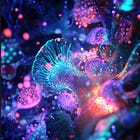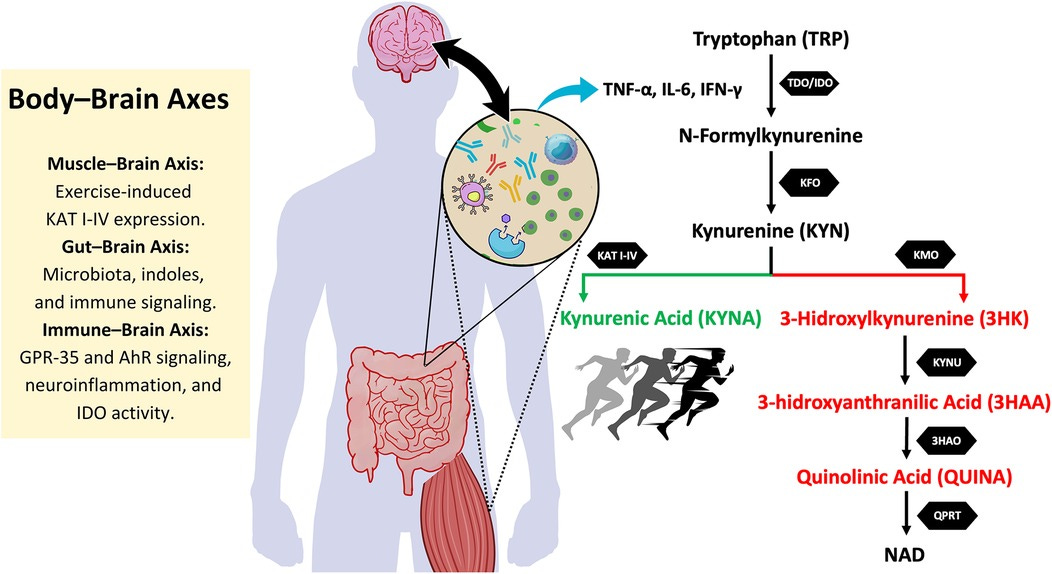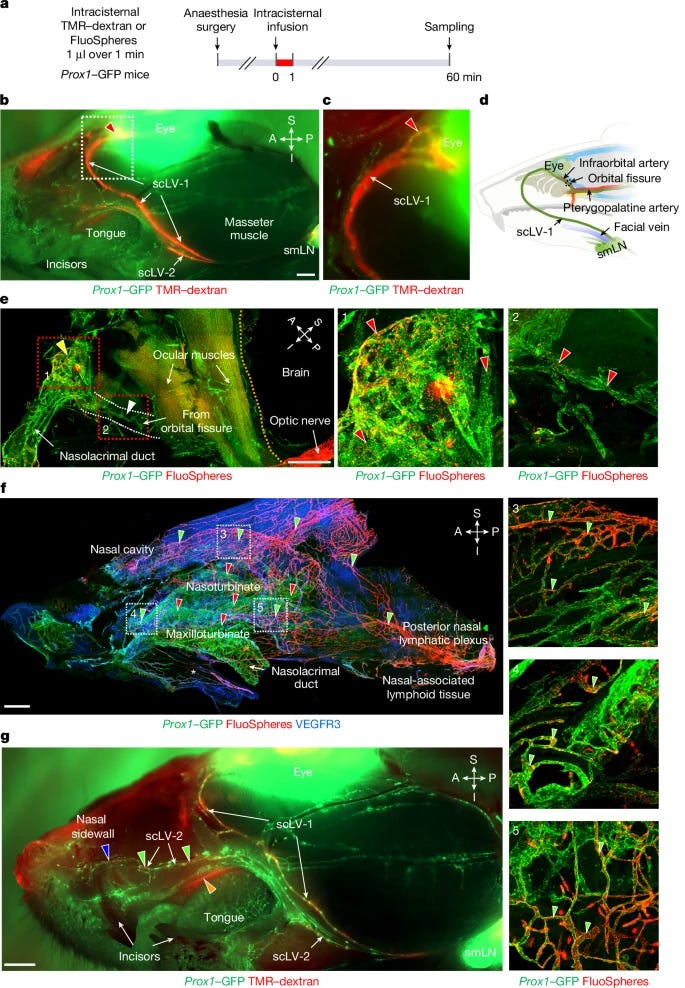At random intervals, I share papers I find deeply interesting, or important, often outside a theme, just an amalgamation of information with my form of my analysis, sprinkled with correlation with SARS-CoV-2 effects. It is safe to say I have many health-related focuses, health-wise related, but one of my long-term focuses has been neurological health and especially recovery.
In neurological pathologies and especially recovery, based on my experience and extensive research, I often challenge the contemporary, often orthodox beliefs of the field and adjacent fields, accurately forecasting findings years before they are published. It isn’t anything extraordinary, the data is there, you need to look a little outside the box.
First, it was how many layers of complexity misfolded proteins have, and I barely scratched the surface, that misfolded proteins are a forgotten, last-resort response towards all forms of injury (infection too), and lastly, ways the body can deal with and remove said “bad proteins”. My focus on neurological issues in the last 5 years stern mostly of the long-term consequences of any level of SARS-CoV-2 infection, thus mitigation and recovery methods are welcomed.
Sadly, the first paper is paywalled, albeit for our purposes, it works just fine since a complete breakdown is not the goal.
Protective exercise responses in the dentate gyrus of Alzheimer’s disease mouse model revealed with single-nucleus RNA-sequencing
Exercise’s protective effects in Alzheimer’s disease (AD) are well recognized, but cell-specific contributions to this phenomenon remain unclear. Here we used single-nucleus RNA sequencing (snRNA-seq) to dissect the response to exercise (free-wheel running) in the neurogenic stem-cell niche of the hippocampal dentate gyrus in male APP/PS1 transgenic AD model mice. Transcriptomic responses to exercise were distinct between wild-type and AD mice, and most prominent in immature neurons.
Exercise restored the transcriptional profiles of a proportion of AD-dysregulated genes in a cell type-specific manner. We identified a neurovascular-associated astrocyte subpopulation, the abundance of which was reduced in AD, whereas its gene expression signature was induced with exercise. Exercise also enhanced the gene expression profile of disease-associated microglia. Oligodendrocyte progenitor cells were the cell type with the highest proportion of dysregulated genes recovered by exercise. Last, we validated our key findings in a human AD snRNA-seq dataset. Together, these data present a comprehensive resource for understanding the molecular mediators of neuroprotection by exercise in AD.
This is quite a remarkable study, the authors used a mouse model using transgenic mice that develop Alzheimer’s disease with much ease, and measure at a single-cell level the effect exercise has in Alzheimer’s Disease, not only measuring improvements, but also which genes experience changes, impacting said improvement.
These mouse findings were later validated using human data, which brings the data and their findings to a level above the usual. To me, the most pertinent finding to our recent discussion on vascular and microvascular health is that he data here demonstrates exercise enhances the gene expression of the neurovasculature. The effects of exercise on vasculature are so fast, it would take a year or two of dedicated research and writing to cover just the brunt.
Worth noting that the neurovascular-associated astrocytes were discovered by this research team. Exercise is a powerful prevention, mitigation and in some ways amelioration of ongoing neurodegeneration because it touches the core of our physiology. Bioenergetics and metabolism at a molecular level.
Exercise is one of the best practices to correct your metabolism at many levels, but more importantly to shift the Tryptophan Metabolism towards the correct pathway, shifting away from the Kynurenine Pathway.
Kynurenine and its byproducts have profound effects not only on receptor expression, gene expression (therefore affecting your body systemically), but also participate in the clotting process, via inflammatory signaling and immune dysregulation. Thus, exercising is a viable way to modulate and minimize your risk of clotting, improving your vascular health via multiple pathways.
The second article is even more important for what we have discussed recently in this Substack, the current subject, and the theme of my next article. The glymphatic system, your body's waste management system, where fluids from your spine travel towards and throughout the brain and remove all sorts of waste (including misfolded proteins that have yet to aggregate), failure over time is one of the main causes for neurodegeneration. A cheap and effective intervention would be more than welcome.
Neurological anatomy at any level is incredibly complex, so I feel I need to write a clarification, which should help many people understando what we are about to discuss, along side the glymphatic system better.
The glymphatic system resides inside the brain, clearing waste via moving cerebrospinal fluid (CSF), within the brain's functional tissue itself. When this fluid has waste, it moves from the brain tissue itself to spaces around veins, at this point, it flows into the subarachnoid space, where it enters contact with the meningeal lymphatic System, which resides in the outer membrane surrounding the brain. Lastly, the meningial lymphatics push it to the cervical lymphatic pathways, which carry the fluid with all the waste away from the brain and down the lymph nodes in the neck.
Most studies cover the Deep Cervical Lymphatic Pathway, but this paper discovered a new pathway, the Superficial Cervical Lymphatic Pathway. Superficial as in it is much closer to the skin not residing deep into your anatomy.
Increased CSF drainage by non-invasive manipulation of cervical lymphatics
First, the authors used a mouse model where all its lymphatic endothelial cells produce a fluorescent protein, making the entire lymphatic network glow green under a microscope, allowing the visualization and study of its flow them to visualize the 'pipes' of this waste-disposal system in real-time.
During this process, the authors discovered that two superficial (as in, not as deep as others) lymphatic pathways leading to the submandibular and accessory submandibular lymph nodes receive massive amounts of CSF (the fluid that drains waste). By their math, this newly identified pathway handles a staggering 53% of the total drainage to the neck, making it equally important as the deep cervical one (the one previously thought to be the main route, running deeper near the spine).
This new superficial pathway has two drainage patterns and were classified as scLV-1 (superficial cervical lymphatics), this pathway follows the already known CFS to subarachnoid space → meningeal lympahtics, but they exist the skull through the orbital fissure and connect to lymphatics around the eye (periorbital tissue), and follows towards the submandibular lymph node.
scLV2 follows a more complex route where the CSF enters the meningeal lymphatics near the olfactory bulb, passes through the cribriform plate (porous bone at the base of the skull), and enters the lymphatics around the nasal mucosa (!!!!). Some meningial lymphatics travel along arteries that pass through the greater palatine canal to join the lymphatic network in the hard palate, the roof of the mouth, and the hard palate plexus also receives fluid from the nasal lymphatics.
Given not only the novelty but also the importance of this pathway, the authors decided to measure how aging affects the drainage capacity, since aging is one of the biggest variables associated with impaired clearance. Aged mice (80-95 weeks, a young mouse is usually 8-12 weeks old) showed a 30% reduction.
This reduction happens because the upstream lymphatic networks in the nasal mucosa and hard palate were severely devenerated, with the area covered by these lymphatics being reduced by up to 80% in the nasal mucosa. The number of lymphatic valves, which ensure a one-way flow for the fluid with waste, was significantly lower in the hard palate.
The main vessels, meaning scLV-1 and scLV-2, were intact in both their diameter, smooth muscle cell coverage, and their pumping ability. The failure here is in the initial lymphatic networks that collect the CSF from the skull base and nasal cavity, withering away, so less fluid reaches the still functional downstream vessels.
To understand how or why this system was failing, the researchers performed single-cell RNA sequencing, which allows you to measure gene expression in every individual cell in a sample of your choosing, here, tissue surrounding the scLVs in both young and aged mice.
Aged mice had a 15 times increase in a specific sub-cluster of Lymphatic Endothelial cells, the cells that form the walls in the lymphatic system, and this sub-cluster highly expressed the gene Nos3, which codes for the enzyme Endothelial Nitric Oxide Synthase (eNOS), responsible for producing Nitric Oxide (NO). Nitric Oxide is a critical signaling molecule that affects blood and lymphatic contraction, relaxing them, promoting better flow.
Despite this increase in the gene, the protein eNOS itself was significantly reduced, meaning the cells are trying to compensate by making more Nos3 mRNA (so more protein can be produced,) but somewhere the signaling fails and the protein is not being produced, or produced properly.
The authors also observed that the connective tissue surrounding the lymphatics (called fibroblasts) had an increased gene expression of genes associated with fibrosis and collagen, meaning the lymphatics become stiffer and less pliable with age. Here is where the good news comes in.
The authors designed, developed, and tested a therapeutic intervention based on their findings. As described earlier, these lymphatic vessels are superficial, and their pumping capacity is still intact, degradation happens elsewhere. By using gentle, repetitive stimulation in the areas where these vessels travel, they more than double the CSD outflow, and tripled its accumulation in the submandibular lymph node. Here is exactly how they did it.
To determine whether CSF outflow could be increased by non-invasive mechanical manipulation through the skin, we developed a force-regulated mechanical stimulator (see Methods for details) and compared low (0.01–0.02 kilogram-force (kgf)) and high (0.04–0.08 kgf) magnitude forces (Extended Data Fig. 13a,b and Supplementary Video 2). Using this device on urethane anaesthetized mice, we compared the effects of downward strokes in three regions of intact skin: (1) from the periorbital area to the mandible; (2) from the nasal sidewall to the mandible; and (3) from rostral to caudal along the path of scLV-1 and scLV-2 en route to the submandibular lymph node (Extended Data Fig. 13c). Each session consisted of two cycles of 10 strokes each of 2-s duration (4 strokes to region 1, 4 strokes to region 2 and 2 strokes to region 3). Two 10-stroke cycles over 40 s were followed by a 20-s rest period (Extended Data Fig. 13c and Supplementary Video 2).
By quite literally massaging the face and neck skin, the author quite literally increased fluid drainage from the lymph nodes by 2.8 times and 4.7 times in the superficial ones, literally overcoming the age-related deficit and restoring to levels seen in the young animals.
This is important not just for age-related issues, but in my opinion, it is important for any cognitive-related sequelae from Covid, which many Long Covid patients suffer, and this would allow a very simple, and highly effective intervention to allow for cognitive recovery, thus moving the recovery needle towards larger and sustained improvement.
Recently, it has been brought to my attention that Clostridioides Difficile infections are increasing at a significant rate, but it has been kept under wraps. C. Diff, as it is commonly called, is a very annoying infection to deal with, its main symptom is lasting diarrhea to the point it leads to general weakness, dehydration, and in a hospital setting, high morbidity.
Dealing with C. Diff infections can be rather troublesome because in weaker individuals with different conditions, it sometimes tends to come back. The treatment itself has side effects.
Efficacy and safety of Saccharomyces boulardii as adjunct therapy with Vancomycin in treating Clostridioides difficile infection: A randomized controlled trial
Clostridioides difficile infection (CDI) is a significant cause of hospital-acquired diarrhea, leading to high morbidity, recurrence, and healthcare costs. Probiotics like Saccharomyces boulardii show potential as an adjunct therapy to standard CDI treatment, but further trials are needed to confirm their efficacy. This study assessed the efficacy and safety of S. boulardii combined with vancomycin for treating mild to moderate CDI. 120 CDI patients diagnosed with positive stool toxin test were randomly assigned to receive two capsules of 250 mg of S. boulardii or a placebo every 12 h alongside 125 mg of vancomycin every 6 h for 10 days. The primary endpoint was the clinical cure rate, with secondary endpoints including recurrence, global cure rate, and diarrheal outcomes. Clinical cure rates were similar between groups (98.4% vs. 98.3%), but the combination group had a significantly higher global cure rate (96.6% vs. 85.3%, p = 0.044) and lower recurrence rate (1.7% vs. 13.1%, p = 0.032). No significant differences were found in diarrheal outcomes, functional ability, or adverse events. No patients discontinued treatment due to intolerance. In conclusion, adding S. boulardii to vancomycin reduced CDI recurrence without affecting functional recovery or increasing adverse events.
Saccharomyces boulardii is a widely researched and common, accessible probiotic used to treat a myriad of conditions, especially gut inflammation, dysbiosis, it has many benefits when used as a probiotic supplement on its own.
By adding just two capsules of 250 mg of S. Boulardii, the clinical cure rate is basically equal, but the global cure rate was over 10% higher, which reflects on the recurrence rate, meaning relapse in the symptoms and C. Diff toxin test. Per the author’s own words, S. Boulardii works on C. Diff infection via multiple mechanisms.
It competes with C. Diff for essential nutrients, it produces antimicrobial substances such as acetic acid and antimicrobial peptides, which also affect other bad microbes. It modulates the immune system to produce more immunoglobulins, helping the body fight the infection, and it neutralizes the toxins produced by C. Diff, both A and B, which are the main drivers of the symptoms. This last effect is particularly of interest for anyone with SARS-CoV-2 exposure (infection or vaccination).
Neutralizing toxins will be one, if not the most important, aspect after a Covid infection as the years pass by. Next article coming this week.
Consider becoming a paid subscriber, and if you are, thank you for your support !










Another way to fight off, recover, and improve neurological health is by using my Brain Stack, which is NOT for everyone, I am aware, but the effects at this point are undeniable. It is strong enough to share many pathways and effects with Reboxetine, which has been studied lately as a way to improve and reverse memory loss in neurodegenerative diseases, among other effects.
Key mechanisms are modulating NMDA receptors, glutamatergic activity, and noradrenergic system activation, thus it enhances neuroplasticity (especially memory/learning), among other improvements.
Food (or supplement) for thought.
I wrote for a lot of today, so any mistakes will be corrected tomorrow. My hand is mildly cooked as the kids say.
Would it be possible to have a graphic of the different facial massage areas for moving the glymphatic system lymph?